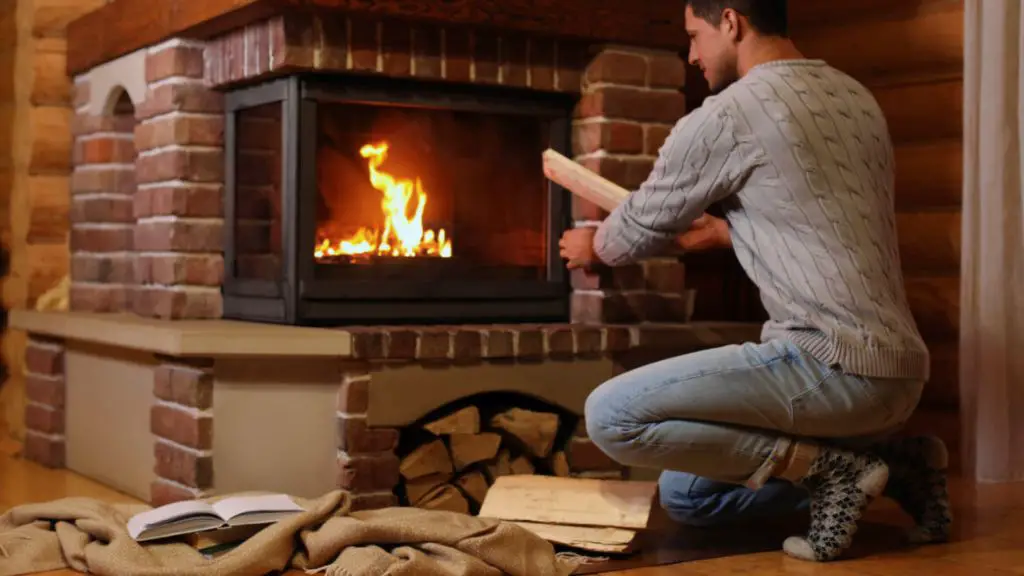Having a fireplace in your home can provide a cozy gathering place and a supplemental heat source during cold weather. However, safely and efficiently operating your fireplace requires knowing when to open or close the damper.
Page Contents
What is a Fireplace Damper?
A fireplace damper is a metal flap or plate that opens and closes the flue (the passageway between the firebox and chimney). When open, the damper allows air to move freely up through the chimney, which helps smoke and gases escape. When closed, it prevents outside air from entering the home through the chimney.
There are two main types of fireplace dampers:
- Manual dampers are operated by a handle or pull chain. They rely on the user to open and close them.
- Automatic dampers open and close on their own based on ambient temperature or other pre-set conditions. This eliminates the need to manually operate it.
Should You Leave the Fireplace Damper Open All the Time?
Generally, no – you should not leave your fireplace damper open at all times. Here are some key reasons why:
- Energy loss: An open damper is like an open window, allowing warm air to escape from your home. This can significantly increase heating costs during colder weather.
- Moisture buildup: An open damper allows warm, moist air to enter the chimney. As this air contacts the colder flue walls, condensation forms which can promote creosote buildup.
- Pests: Raccoons, birds and other wildlife may enter the chimney if the damper is continually open.
- Dust and odors: Leaving the damper open lets in outdoor smells and dust which can circulate into living spaces.
For these reasons, the damper should only be open when you have a fire burning in the fireplace. It’s best to close it whenever the fireplace is not in use.
When to Open the Fireplace Damper
You should open the fireplace damper:
- Right before lighting a fire – Opening the damper provides oxygen to help the fire ignite and begin drafting properly up the chimney.
- Anytime a fire is actively burning – The damper needs to stay open the entire time a fire is lit to allow smoke to rise up the flue.
- For 5-10 minutes after extinguishing the fire – Keeping the damper open allows the remaining smoke and gases to properly vent.
It’s crucial to remember to open the damper prior to lighting a fire. Failure to do so can cause smoke and carbon monoxide to spill out into the living space, which poses serious health and safety risks.
When to Close the Fireplace Damper
You should close the fireplace damper:
- After the fire is completely extinguished – Closing the damper after the fire has gone out prevents conditioned air from escaping up the chimney.
- When the fireplace is not being used – Keeping the damper closed whenever there is not an active fire helps minimize energy loss and pests.
- During the warm season – Closing the damper in spring, summer and early fall prevents cool air from circulating down the chimney into living areas.
A good rule of thumb is to keep the damper closed unless a fire is burning. Close it immediately after the fire has gone out and the chimney has sufficiently vented the smoke.
Tips for Proper Damper Use
Follow these tips for safely and effectively operating your fireplace damper:
- Inspect the damper annually and make sure it fully opens and closes.
- Clear any obstructions near the damper that may impede its movement or sealing.
- Make sure the chimney and damper are properly cleaned and maintained before lighting the first fire of the season.
- Always open the damper before lighting a fire, and close it only when the fire is completely extinguished and the chimney is properly vented.
- Install a block-off plate underneath the damper during the warm season to prevent air leakage.
- Listen for sounds of airflow to identify unintended damper openings or closings.
Installing a block-off plate or chimney balloon can further minimize heat loss and energy inefficiency when the fireplace is not in use.
Signs Your Damper May Be Malfunctioning
Watch for these signs that your fireplace damper may be faulty or broken:
- Smoke, odors or cold air leaking into the house when the fireplace isn’t being used
- The damper appearing stuck open or closed and not moving freely
- Rattling noises coming from the fireplace
- Drafty, cold feelings around the fireplace
- A sudden spike in your heating bills
A damaged or malfunctioning damper can jeopardize the safety and efficiency of your fireplace. Have your damper professionally inspected right away if you notice any issues.
Automatic vs. Manual Dampers
Both automatic and manual dampers have pros and cons to consider:
| Type | Automatic | Manual |
|---|---|---|
| Pros |
|
|
| Cons |
|
|
Automatic dampers eliminate the risk of leaving the damper closed by mistake. However, manual dampers are generally more affordable and easier to fix. Select the option that best matches your needs and level of attentiveness.
Conclusion
Having an open fireplace damper at all times can lead to energy loss, moisture buildup, and other issues. Follow these guidelines for proper damper operation:
- Open the damper when lighting a fire and keep it open anytime burning.
- Close the damper only when the fire is completely out and the chimney is vented.
- Keep the damper closed when not using the fireplace.
- Inspect, clean and maintain the damper annually.
- Repair or replace faulty dampers immediately.
Using your fireplace damper correctly will allow you to safely enjoy cozy fires while optimizing energy efficiency.
